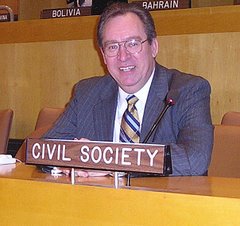Some more blurring details about the MDGs
The operative targets
Goal 1—Eradicate extreme poverty and hunger.
Target 1: Halve, between 1990 and 2015, the proportion of people whose income is less than $1 a day.
Target 2: Halve, between 1990 and 2015, the proportion of people who suffer from hunger.
Goal 2—Achieve universal primary education.
Target 3: Ensure that, by 2015, children everywhere, boys and girls alike, will be able to complete a full course of primary schooling.
Goal 3—Promote gender equality and empower women.
Target 4: Eliminate gender disparity in primary and secondary education, preferably by 2005, and in all levels of education, no later than 2015.
Goal 4—Reduce child mortality.
Target 5: Reduce by two-thirds, between 1990 and 2015, the under-five mortality
Goal 5—Improve maternal health.
Target 6: Reduce by three-quarters, between 1990 and 2015, the maternal mortality ratio
Goal 6—Combat HIV/AIDS, malaria, and other diseases.
Target 7: Have halted by 2015 and begun to reverse the spread of HIV/AIDS.
Target 8: Have halted by 2015 and begun to reverse the incidence of malaria and other major diseases.
Goal 7—Ensure environmental sustainability.
Target 9: Integrate the principles of sustainable development into country policies and program and reverse the loss of environmental resources.
Target 10: Halve, by 2015, the proportion of people without sustainable access to safe drinking water and basic sanitation.
Target 11: Have achieved, by 2020, a significant improvement in the lives of at least 100 million slum dwellers.
Goal 8—Develop a global partnership for development.
Target 12: Develop further an open, rule-based, predictable, nondiscriminatory trading and financial system (including a commitment to good governance, development, and poverty-reduction—both nationally and internationally).
Target 13: Address the special needs of the least developed countries (this policy would include tariff- and quota-free access for exports, an enhanced program of debt relief for highly indebted poor countries (HIPC), cancellation of official bilateral debt, and more generous official development assistance (ODA) for countries committed to poverty reduction).
Target 14: Address the special needs of landlocked countries and small island developing states (through the Program of Action for the Sustainable Development of Small-Island Developing States and 22nd General Assembly provisions).
Target 15: Deal comprehensively with the debt problems of developing countries through national and international measures in order to make debt sustainable in the long term.
Target 16: In cooperation with developing countries, develop and implement strategies for decent and productive work for youth.
Target 17: In cooperation with pharmaceutical companies, provide access to affordable, essential drugs in developing countries.
Target 18: In cooperation with the private sector, make available the benefits of new technologies, especially information and communications.
The official MDGs’ Partners:
Food and Agriculture Organization (FAO)
International Energy Agency (IEA)
International Labor Organization (ILO)
International Monetary Fund (IMF)
Inter-Parliamentary Union (IPU)
International Telecommunication Union (ITU)
Organization for Economic Cooperation and Development (OECD)
Partnership in Statistics for Development in the 21st Century (PARIS21)
United Nations
United Nations Center for Human Settlements (Habitat)
United Nations Children’s Fund (UNICEF)
United Nations Development Fund for Women (UNIFEM)
United Nations Development Group (DevLink)
United Nations Development Program (UNDP)
United Nations Environment Program (UNEP)
United Nations Framework Convention on Climate Change (UNFCCC)
United Nations Millennium Declaration
United Nations Millennium Project
United Nations Population Division
United Nations Fund for Population Activities Fund (UNFPA)
United Nations Statistics Division (UNSD)
The World Bank Group’s Data and Statistics
International Union for Conservation of Nature and Natural Resources (IUCN)
World Health Organization (WHO)
World Trade Organization (WTO)
United Nations Educational Scientific and Cultural Organization (UNESCO)
United Nations Program on HIV/AIDS (UNAIDS)
